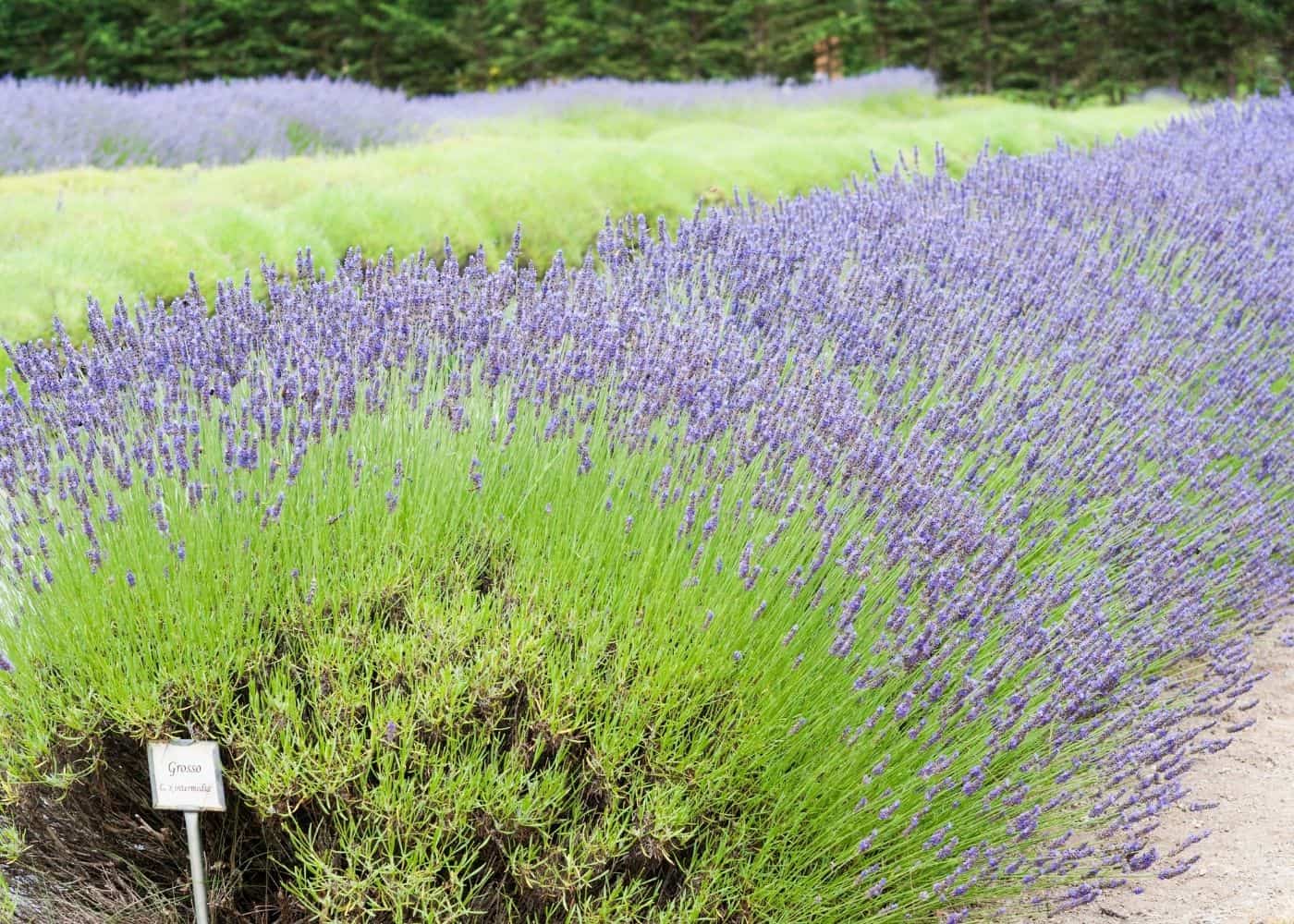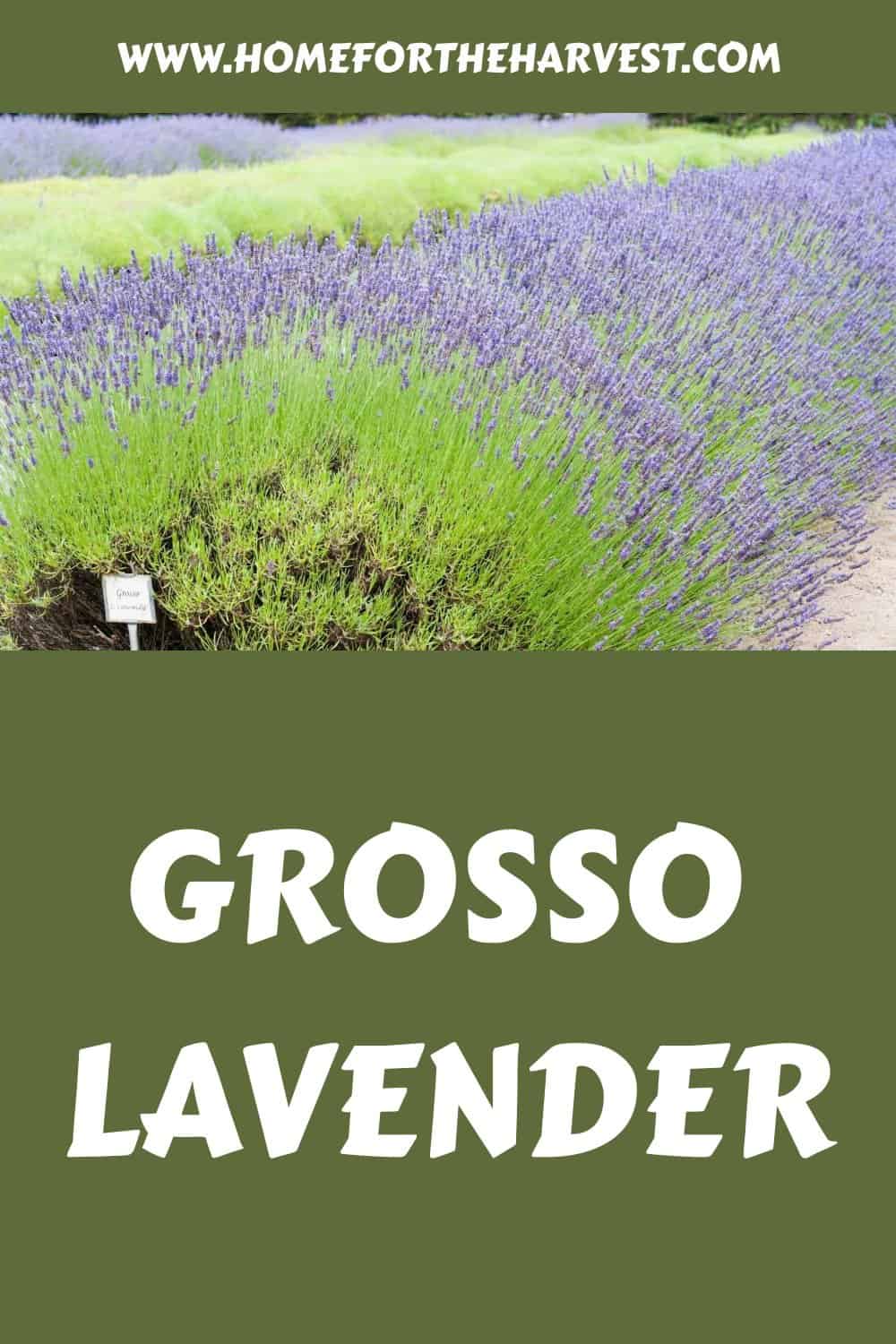Grosso lavender (Lavandula x intermedia ‘Grosso’) is a lavandin known for its large size and masses of tall dark purple flower spikes. This lavender variety is very popular in landscaping due to its spherical shape and reliable flowers. These plants are one of the easiest lavenders to grow (and also among the most productive in terms of blooming). Grosso lavender is also grown as a source of lavender oil due to the high volume of flowers it produces.
Grosso lavender basics
Grosso Lavender is a Lavandin (Lavandula x intermedia ‘Grosso’) bred as a cross of English and Portuguese lavender species. The highly fragrant flowers are a violet-purple color atop long stems. This hybrid variety is easy to grow, low maintenance in the landscape, and resistant to common plant diseases.
Grosso Lavender plants are quite tall when in flower, reaching 30″ (75 cm) high in good conditions. Lavender grower Pierre Grosso discovered This prized Lavender variety in France over 50 years ago (1905-1989).
Grosso lavender is sometimes incorrectly referred to as a variety of French lavender (Lavandula dentata) or English lavender (Lavandula angustifolia). In fact, A Grosso Lavender plant is actually a hybrid variety created by crossing English Lavender (Lavandula angustifolia) and Portuguese Lavender (Lavandula latifolia). Hybrids of this nature (Lavandula x intermedia) are referred to as Lavandins. All Lavandins, including Grosso, produce sterile seeds and must be propagated by division or cuttings rather than grown from seed.
Grosso Lavender is most commonly used as an ornamental landscaping plant. These dense rounded shrubs work well either as stand-alone feature plantings or as hedging plants. Mass plantings of Grosso Lavender in bloom tend to be magnets for beneficial insects and pollinators, including native bees, honeybees, hummingbirds, and butterflies. Grosso is also favored in the essential oil production industry, including in the Vaucluse region of France where it was discovered, due to the masses of richly fragrant flowers.
Grosso Lavender grows best in full sun planting locations with well-drained sandy soil reminiscent of the Mediterranean region. These small evergreen shrubs are cold-tolerant in the range of Hardiness Zone 5-9. Lavender is also resistant to deer and rabbits, and can also tolerate drought conditions quite well once established.
“Due to its spherical shape and masses of flower spikes, ‘Grosso’ is used as an ornamental or hedging plant, as well as for fragrant and oil purposes. It is one of the most popular oil plants in the lavender wordl because of its high-yielding spikes.”
Lavender: The Growers Guide, by Virginia McNaughton
Where to buy Grosso lavender plants
Grosso Lavender (Lavandula x intermedia ‘Grosso’) is widely available from local nurseries, larger garden centers, and online plant shops. Grosso Lavender plants are generally labeled as ‘Grosso’ Lavender, but may also be labeled with synonymous common names including “Dilly Dilly Lavender” and “Wilson’s Giant Lavender”.
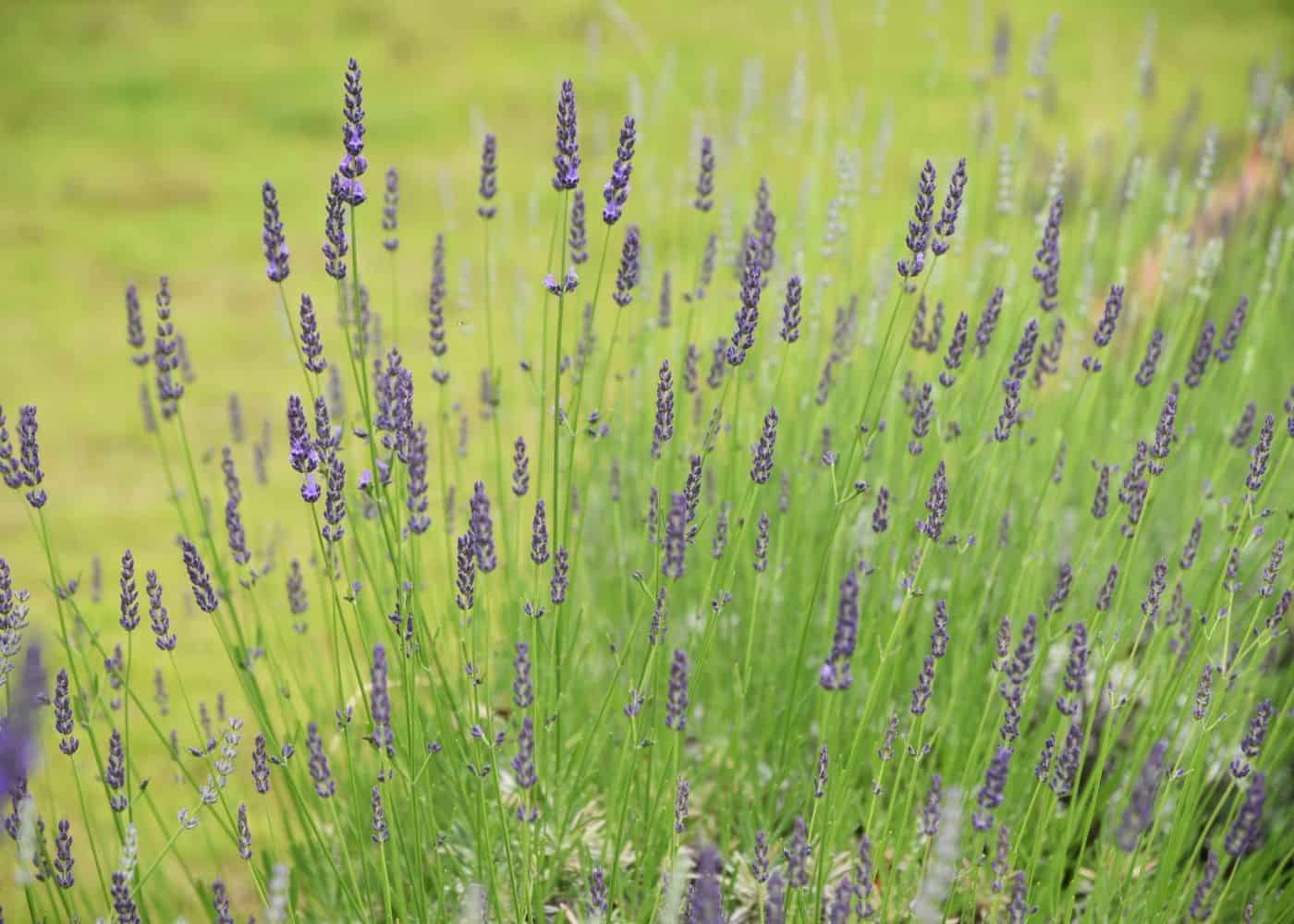
Where to plant Grosso lavender
Grosso Lavender can be grown in zones 5-9. Plants grown in the coldest winter temperatures may require extra winter care, such as winter protection covers or mulch.
Grosso Lavender should be planted in a full-sun location with well-drained sandy soil. In terms of full sun, the plant’s leaves should receive at least 6-8 hours of full sun per day. Well-drained soil like sandy loam at the planting site allows excess water to pass through easily, leaving small air pockets in the soil voids (and avoiding excessive moisture). Avoid planting Lavender anywhere water tends to pool after rainfall. If you must plant in clay soil, amend the soil with organic compost, peat, and/or coconut coir to create a lighter drier mix.
Grosso Lavender grows best in a neutral to alkaline soil pH. Lavender is a Mediterranean plant that grows best in limestone-derived soil. The variety ‘Grosso’ was discovered in an area of Provence named after the huge karst limestone Fontaine de Vaucluse spings. While it is somewhat tolerant of acidic soil, it doesn’t thrive in these planting locations unless the soil pH is addressed. Overly acidic soil should be amended with dolomite garden lime prior to planting and potentially once each year.
Grosso is one of the largest varieties of lavender commonly available, making it a great choice for high-impact plantings in large areas. It works very well as a hedging plant or in a mass planting, but can also be a versatile feature shrub. It can also be planted in rock gardens or pea gravel patios.
How to plant Grosso lavender
Grosso Lavender is best planted in early spring or in the fall. Transplanting woody perennials like lavender is usually most successful when done early in the morning, on a cloudy day, or when the planting area is otherwise shielded from harsh direct full sun. Planting outside of the proper planting time may stress the plant and delay the growth of the roots into the surrounding soil.
Here are the basic steps for planting Grosso Lavender:
- Dig a hole for the plant’s root ball. The hole should be about twice as wide as the pot the plant was sold in but no deeper than the potting soil inside the planter. Pour some water into the hole and watch to ensure the water drains down easily into the soil.
- Pull the Grosso Lavender plant out of the nursery pot. Take a look at the roots, if not too many roots are visible on the outside of the root ball, it can go straight into the planting hole. If there are thick white roots circling around the root ball (particularly at the bottom), you may wish to gently loosen the root ball and coax the thicker roots out of the circular pattern and into more of an outwards direction.
- Backfill the planting hole gently around the sides of the lavender plant’s root ball. Use the soil that came out of the hole to backfill it, gently tamping it down as you go. You can mix an organic transplanting fertilizer into the soil used to backfill the planting hole.
- Apply a ~1″ thick layer of compost as an organic mulch over the surface of the soil to keep weeds down, buffer soil from temperature swings, and provide a natural source of slow-release plant nutrients.
- Water the newly planted lavender thoroughly after planting.
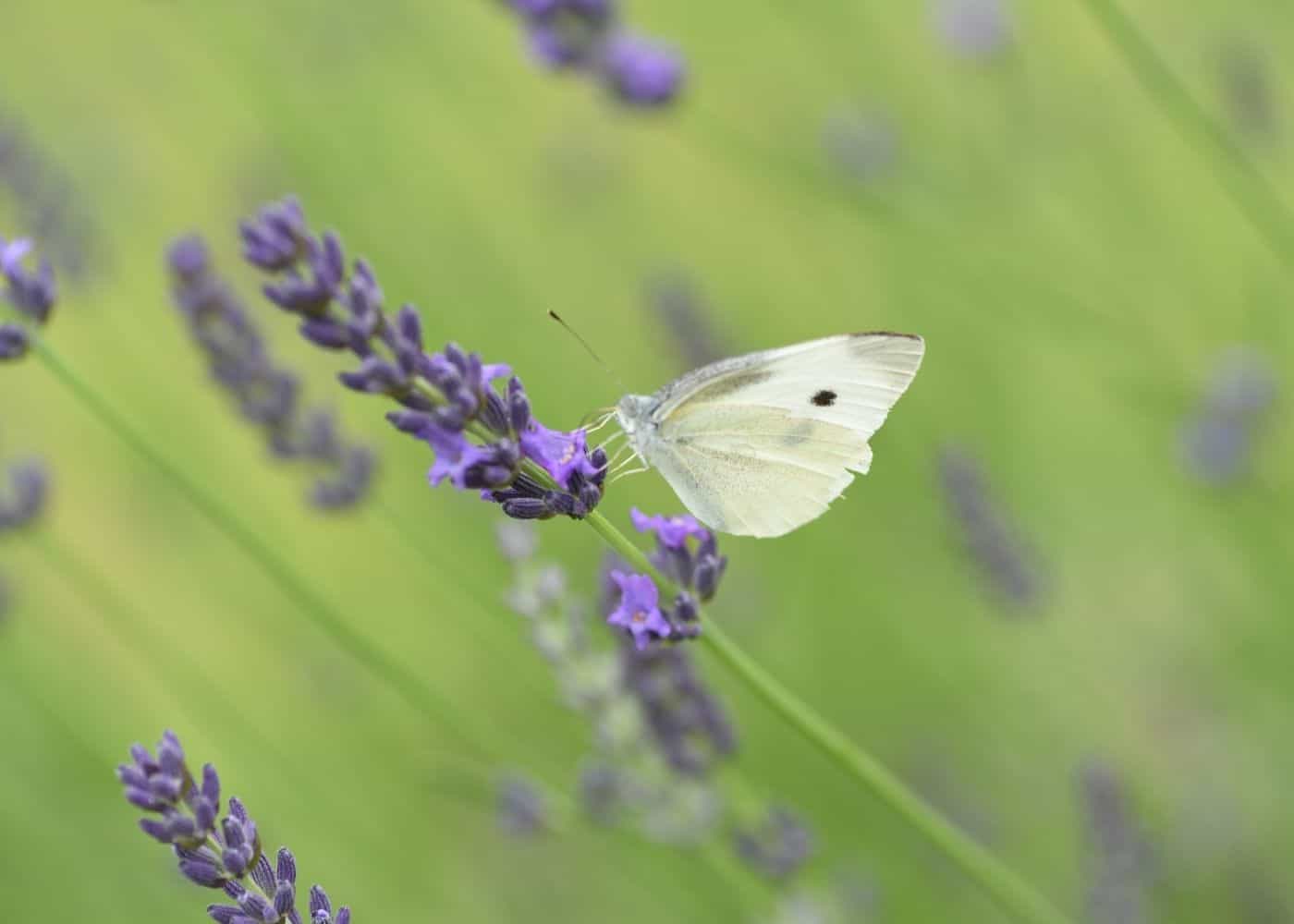
How to grow & care for Grosso lavender
Grosso Lavender is a relatively low-maintenance plant to grow and care for.
Watering Grosso lavender
Grosso Lavender is relatively drought-tolerant once established in the landscape, but it does take a year or two for the roots to grow enough to support the plant in dry soil. Check soil moisture levels regularly for a year after planting and water whenever the top inch of soil dries out.
Watering may be infrequent in moist spring/fall weather, but the plants may require irrigation several times a week during heatwaves or dry summer weather. Watering right at the soil level (such as with drip irrigation) is preferable to overhead watering, as moistening leaves regularly can lead to fungal disease. Diseases can be more of a problem in wet climates with high humidity.
Once the plants have well-established perennial roots in the surrounding soil, Grosso Lavender is tolerant of dry soil, and the plants don’t need regular watering in most conditions. Don’t overwater established plants, as overly damp soil can stress the plant and potentially lead to root rot if the soil is poorly drained. Limit supplemental watering except in overly arid climates.
Fertilizing Grosso lavender
Grosso Lavender plants may need to be fed with an organic fertilizer when the soil is nutrient-deficient. Lavender plants can be fed with fertilizer in the spring after the plants break winter dormancy and again in late summer after flowering has finished. Timing fertilizing will depend on the USDA hardiness planting zones number, with cooler climates waiting for the ground to thaw prior to fertilizing plants and very warm winter areas fertilizing as early as late winter.
Follow the instructions on the specific fertilizer product for application details. In planting locations with naturally acidic soil, you may also wish to apply garden lime in the spring or in the autumn as these plants have limited tolerance for acidic soil.
Pruning Grosso lavender
Grosso plants require annual pruning for best results. Hybrid Lavender is most commonly pruned down to mounds in the late summer after the plant flowers. This annual pruning is generally quite significant on mature plants, removing 1/3 to 1/2 of the foliage. For instance, if most stems with leaves are about 30″ long, they can be cut back to 15″-20″ long each to create the mounded spherical shape that Grosso is famous for. Here is a detailed article about when to cut back lavender.
Grosso plants can also be lightly sheared along the sides in the early spring if planted in a hedge. Spring is also a good time to prune off any stems that died during the winter. Also, remove any stems that appear to be dying, diseased, or damaged. These stems can be removed right down to the base of the plant.
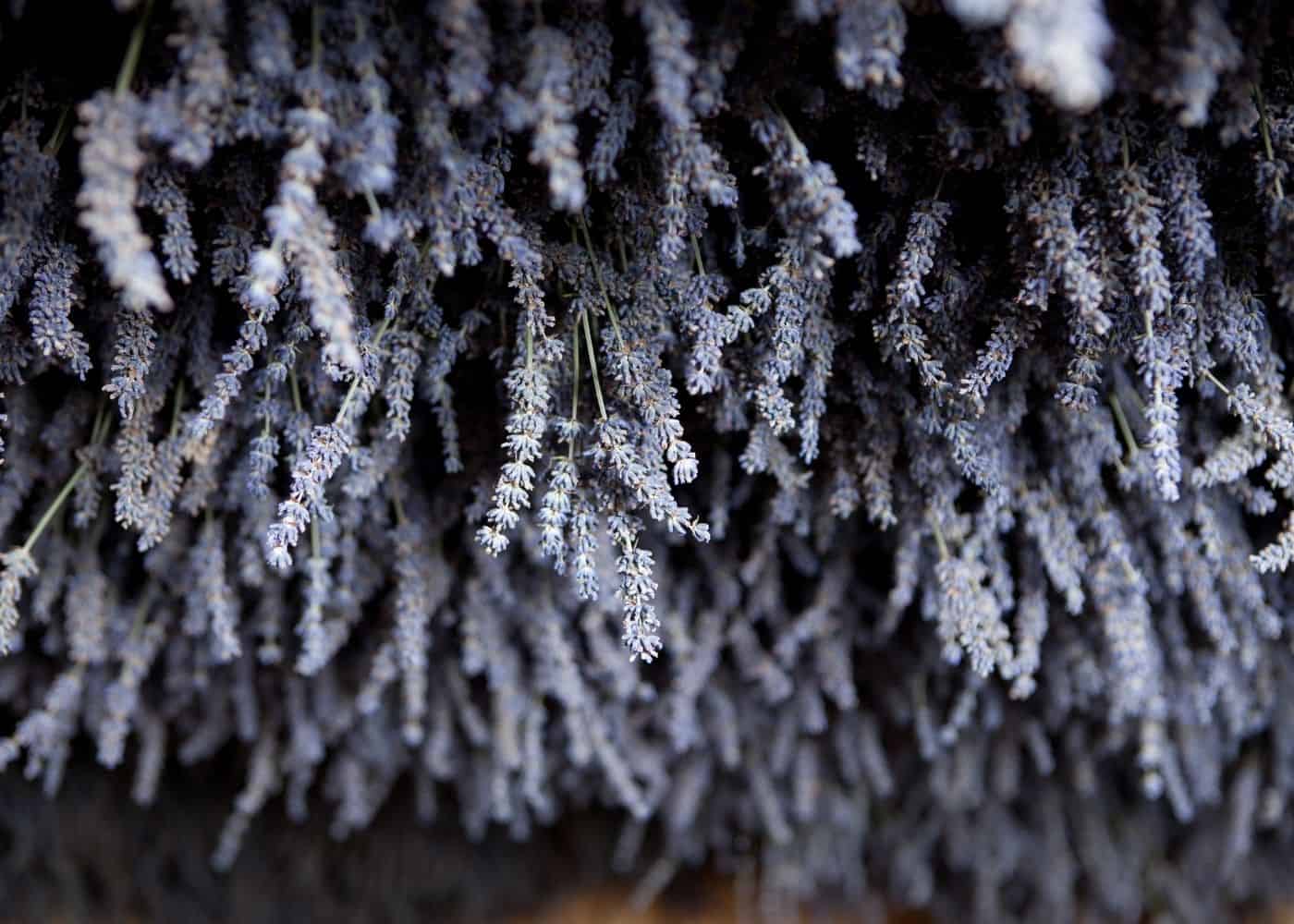
Harvesting Grosso lavender
Grosso Lavender is typically harvested in early summer as the first flowers start to bloom on the plant. Harvested flowers can be used in fresh bouquets or dried for fragrant crafts.
When to harvest Grosso lavender
Timing the lavender harvest depends upon how the lavender will be used. Most gardeners try to harvest Grosso Lavender as the first flowers on the spike open, as the flower spikes will have the longest vase life and strongest fragrance as cut flowers when harvested early. If left to flower on the plant, the lavender can still be harvested, but it may have less scent, and the dried flowers tend to fall off the stalk.
How to harvest Grosso lavender
Harvest your Grosso Lavender flower stems in the morning. Wait until the morning dew has dried but try to harvest the flowers before the heat of the day becomes too intense. Use a clean, sharp pair of scissors or pruning shears to cut each stem off the plant. You can remove the stem down to half its height. For instance, in most cases, a flower stem that stretches 30″ from ground level to the tip of the flower spike can be cut to 15″ long.
Using Grosso lavender
Grosso Lavender is well suited to use in floral arrangements, potpourri, scented sachets, lavender wands, perfume, and other fragrant crafts. To dry Lavender, either hang the flower spikes or lay them flat to dry in a warm location with good air circulation. Grosso Lavender is also very well suited to essential oil production.
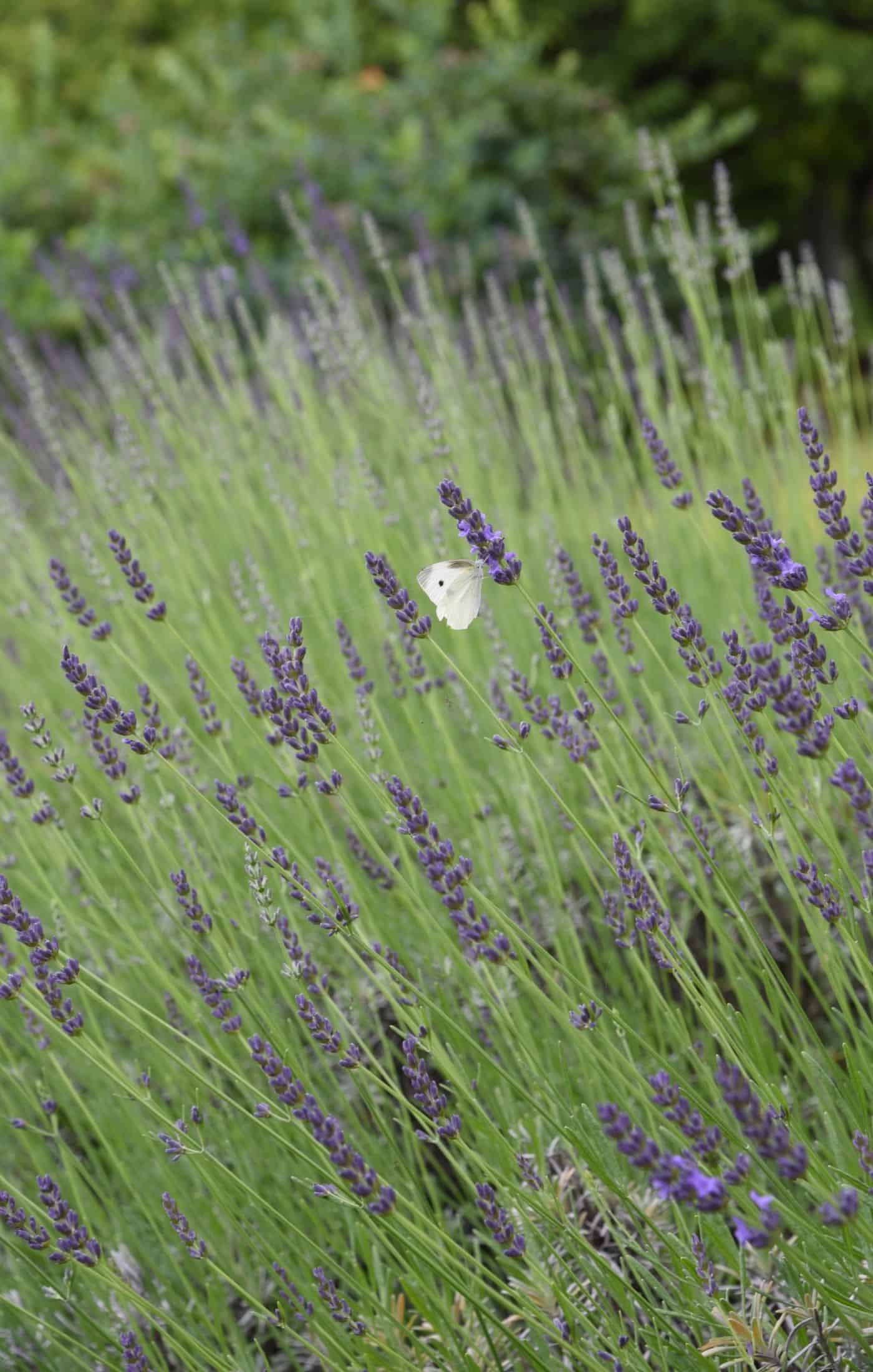
Similar lavender varieties to consider
If Grosso Lavender is unavailable or otherwise not the variety of choice, there are plenty of other cultivars to consider. Other popular similar Lavandins include Gros Bleu lavender, Provence lavender, Hidcote Giant lavender, Grappenhall lavender, and Impress Purple lavender.
Common plant diseases affecting Grosso lavender
While Lavandins like Grosso are generally quite hardy, there are several fungal, bacterial, and viral diseases that can affect them. Fortunately, these plants are naturally resistant to the Lavender disease Mycoplasm Yellow Decline.
More common fungal diseases like leaf spot fungi (Septoria lavandulae) and root rot caused by Phytophthora mold can affect Grosso Lavender. This generally happens in areas with high rainfall and/or frequent overhead watering. Root rot typically also occurs where the soil does not drain out excess water. Take care to ensure soil is draining well and that air is circulating around the base of the plant.
Disease is most common in rainy, humid climates. Lavender in these climates should ideally be planted in soil with excellent drainage, if possible, and in open areas with good air circulation.
Common garden pests affecting Grosso lavender
Grosso lavender plants are sometimes attacked by garden pests such as spittle bugs, mealy bugs, and aphids. These bugs can generally be sprayed off the plant with a sharp stream of water but may require an organic pesticide spray once the pests have become established on the plant(s).
Mammals rarely attack Grosso lavender due to its strong scent. Deer generally avoid lavender completely, especially if the plant has flowers on it. Young plants may be attacked by rabbits and other smaller burrowing mammals. Rabbits tend to dig around the roots rather than attacking the foliage or flowers.


